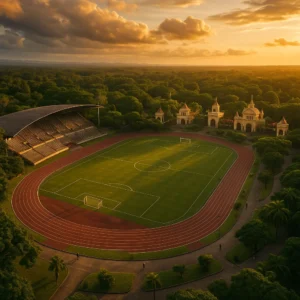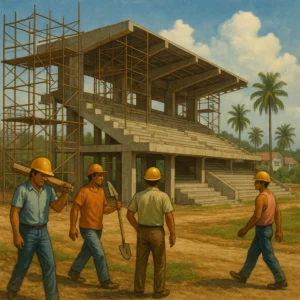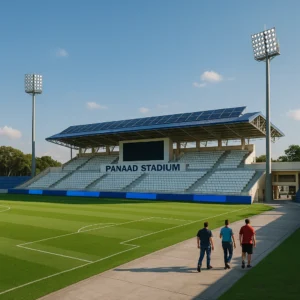Panaad Stadium Built: 7 Key Moments You Missed

The story of Panaad Stadium in Bacolod City, Negros Occidental isn’t just about concrete and steel—it’s about cultural pride, local leadership, and a rising football movement in the Philippines.
If you thought it was just another sports facility, think again. Here are the pivotal moments in its construction journey that even die-hard fans may have missed.
The Site Selection Was Strategically Cultural
Panaad Stadium was planned within the Panaad Park and Sports Complex, not just for convenience—but to align with the annual Panaad sa Negros Festival.
This decision positioned the stadium at the crossroads of sports and tradition, allowing it to serve both football tournaments and major local festivals in the Western Visayas.

Local Government Led the Charge
Unlike many stadium projects driven by national agencies, Panaad’s development was initiated by the Provincial Government of Negros Occidental.
This localized approach gave it:
-
Community relevance
-
Strong support from local officials
-
Early integration with provincial events and schools
The Architects Focused on Function First
Panaad’s architectural design embraced a modular, multi-sport layout, allowing it to:
-
Host football and athletics events
-
Support festivals and civic gatherings
-
Integrate a track-and-field oval without compromising field dimensions
Its design emphasized open-air flexibility, in line with the climate and terrain of Negros Occidental.
Construction Phases Were Tied to Regional Events
The development of the stadium wasn’t rushed. Instead, its construction was timed alongside key events, like the:
-
Hosting of regional Palarong Pambansa tournaments
-
Preparation for provincial festivals
-
Scheduled sports events under NOFA (Negros Occidental Football Association)
This phasing allowed for infrastructure upgrades without disrupting community use.
The Stadium Became a Symbol of Unity

Beyond design and planning, Panaad grew into a symbol of unity among municipalities.
Each of the 13 cities and 19 towns in Negros Occidental has its own themed pavilion in the nearby park, surrounding the stadium and representing their presence during festivals and games.
This layout created a shared cultural space, deeply tied to the stadium’s identity.
International-Standard Renovations Sparked New Interest
Years after its opening, the stadium began receiving upgrades to meet FIFA match standards.
Upgrades included:
-
Improved grandstand seating
-
Modern lighting systems
-
Enhanced pitch drainage and turf quality
-
Media and press facilities for televised matches
These improvements positioned Panaad Stadium as a go-to venue for Philippine Azkals matches and international fixtures.
The Construction Helped Spark Local Football Growth
The physical presence of Panaad Stadium inspired a new generation of footballers in the Philippines.
It played a role in:
-
Hosting youth tournaments and grassroots leagues
-
Serving as a training ground for Western Visayas-based players
-
Attracting the attention of national scouts and clubs
Many players from the Philippine Football League (PFL) and even the Azkals trace early memories to matches at Panaad.
Why This Stadium Still Matters
Panaad Stadium is more than a structure—it’s a living legacy.
Its construction marked a turning point in how sports infrastructure can reflect local pride, community vision, and national ambition.
As football continues to grow in the Philippines, so does the relevance of stadiums like Panaad—built with purpose, heart, and long-term vision.

Frequently Asked Questions
Where is Panaad Stadium located?
📍 In Bacolod City, capital of Negros Occidental, within the Panaad Park and Sports Complex.
When was Panaad Stadium built?
🏗️ It was officially opened in 1998, after phased construction throughout the 1990s.
What sports are played at Panaad Stadium?
⚽ Primarily football and athletics, along with local civic events and festivals.
